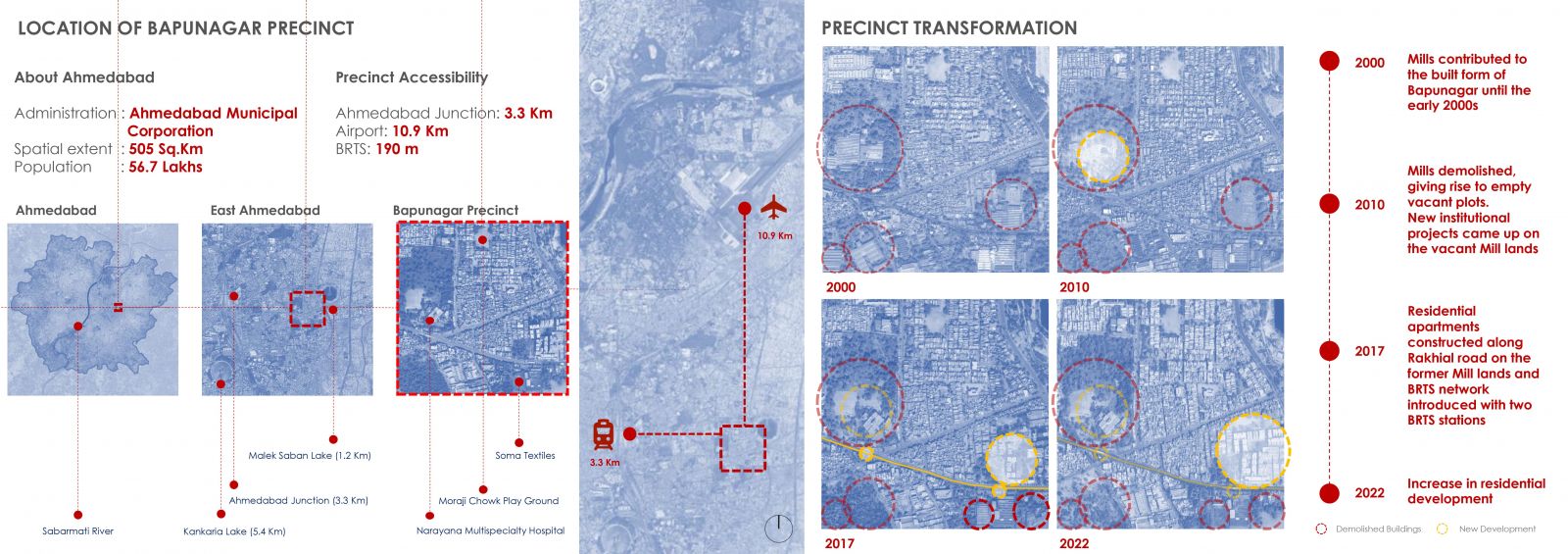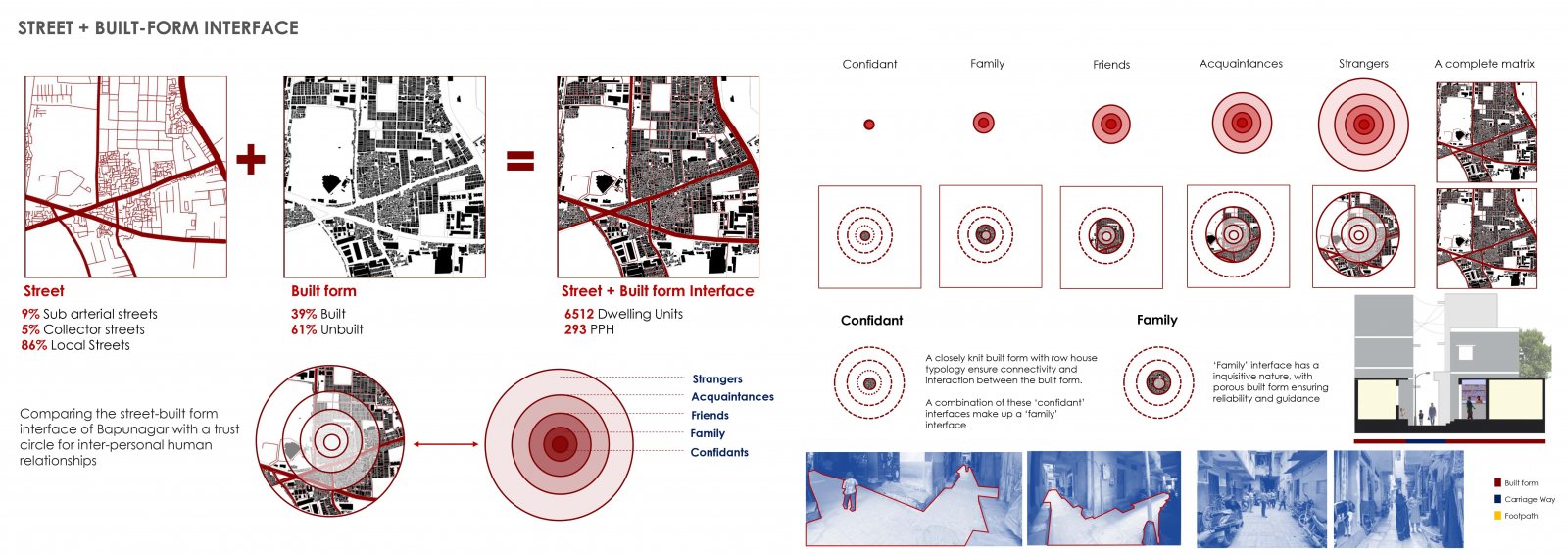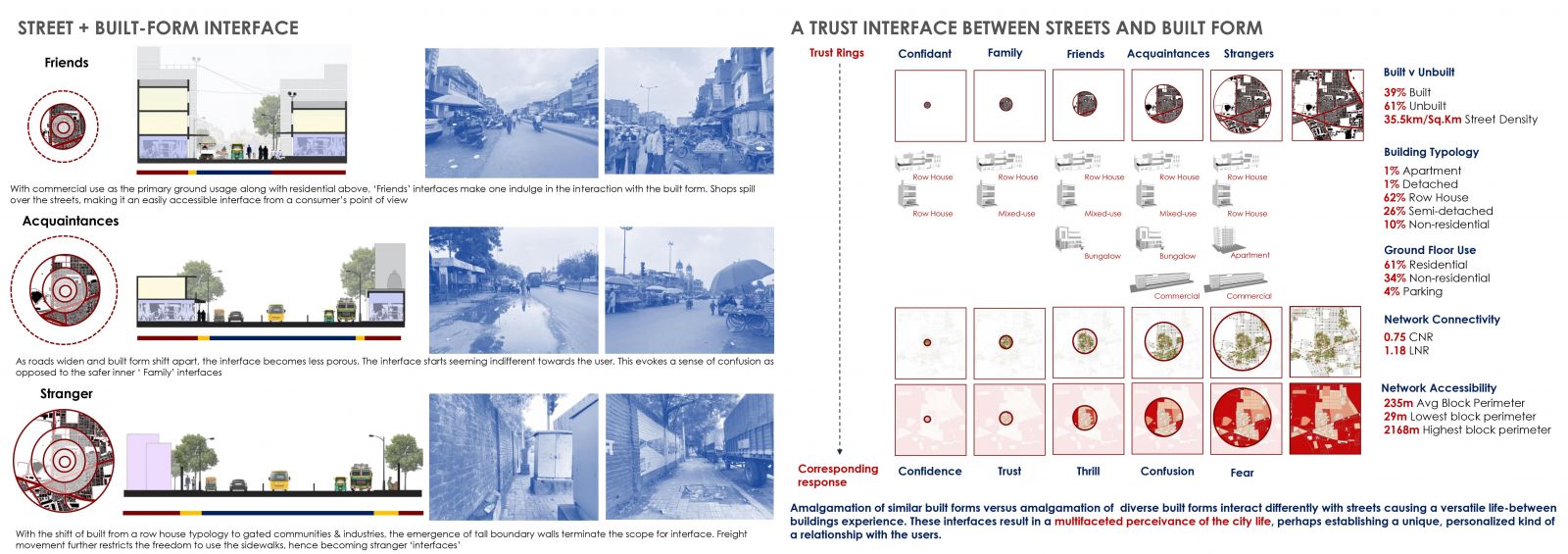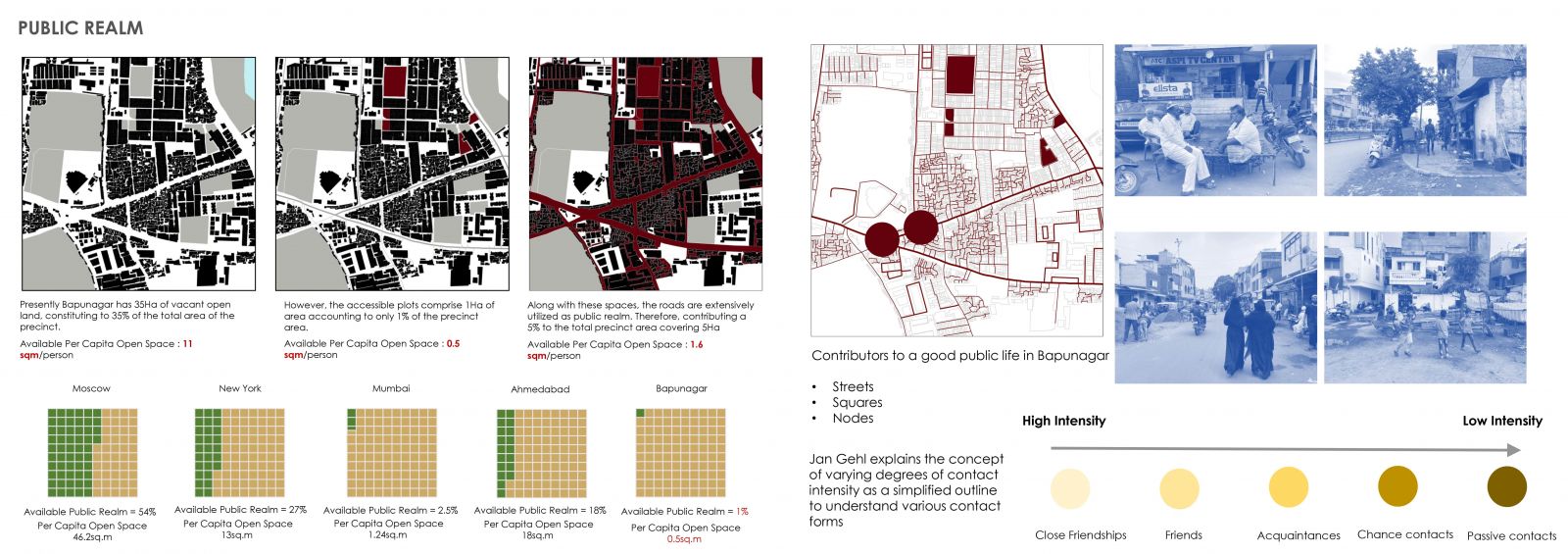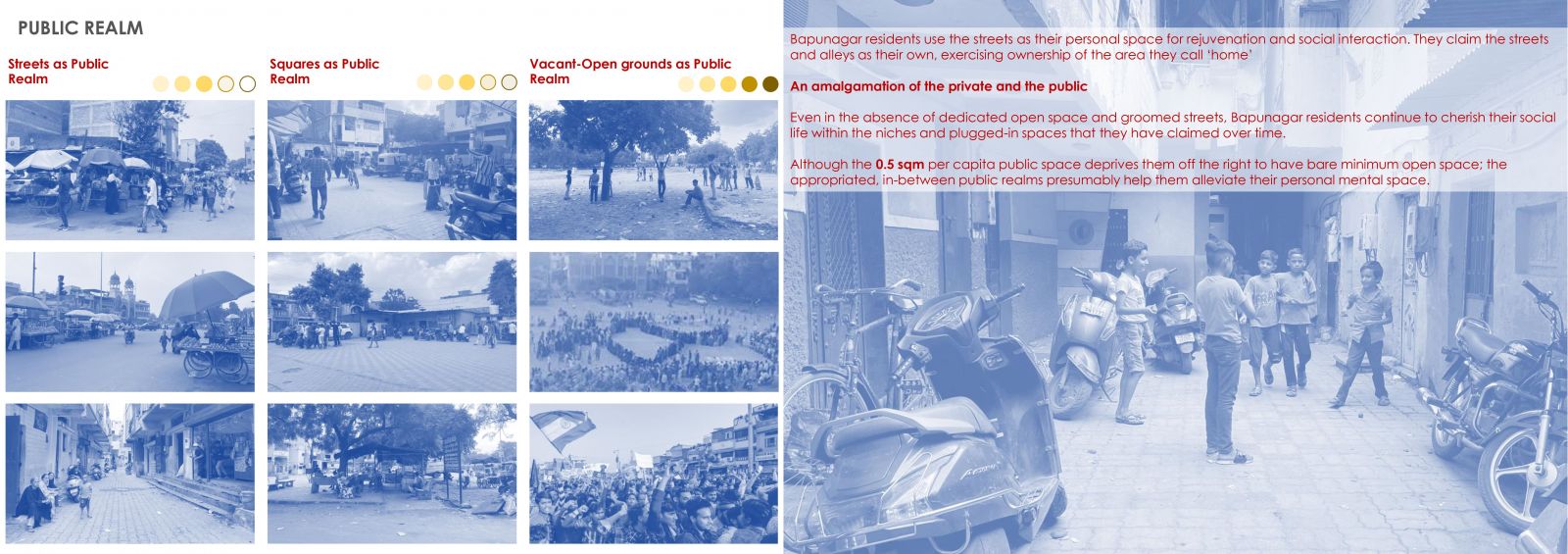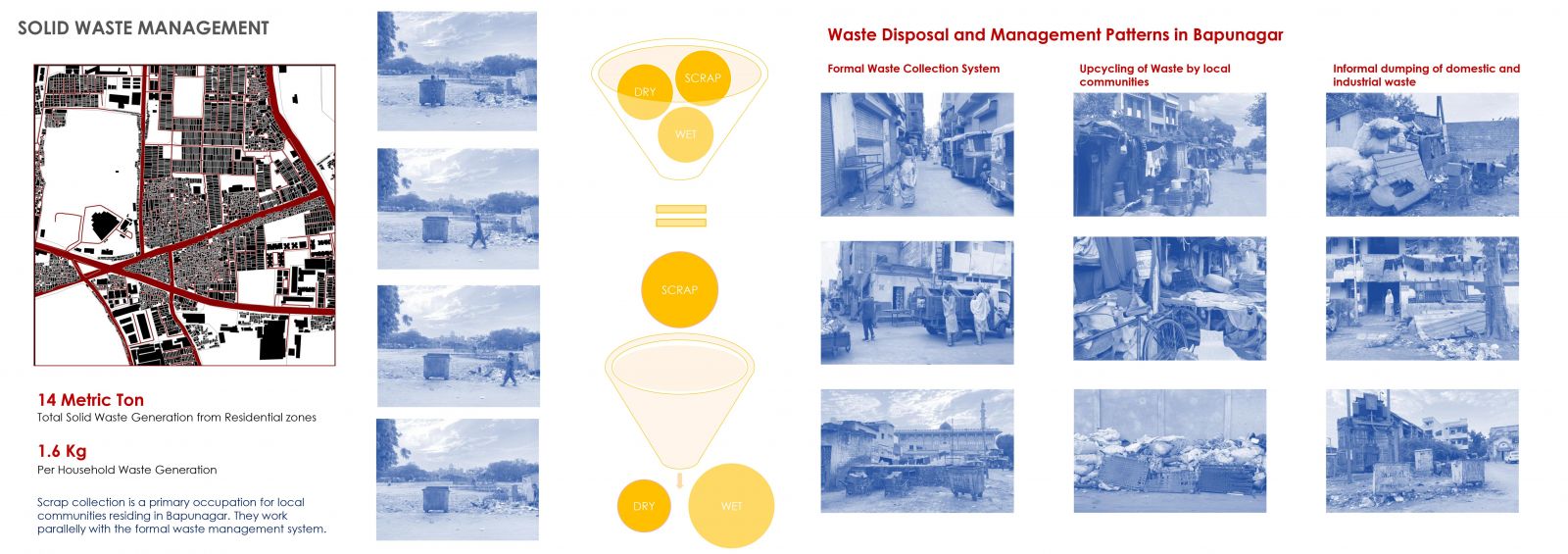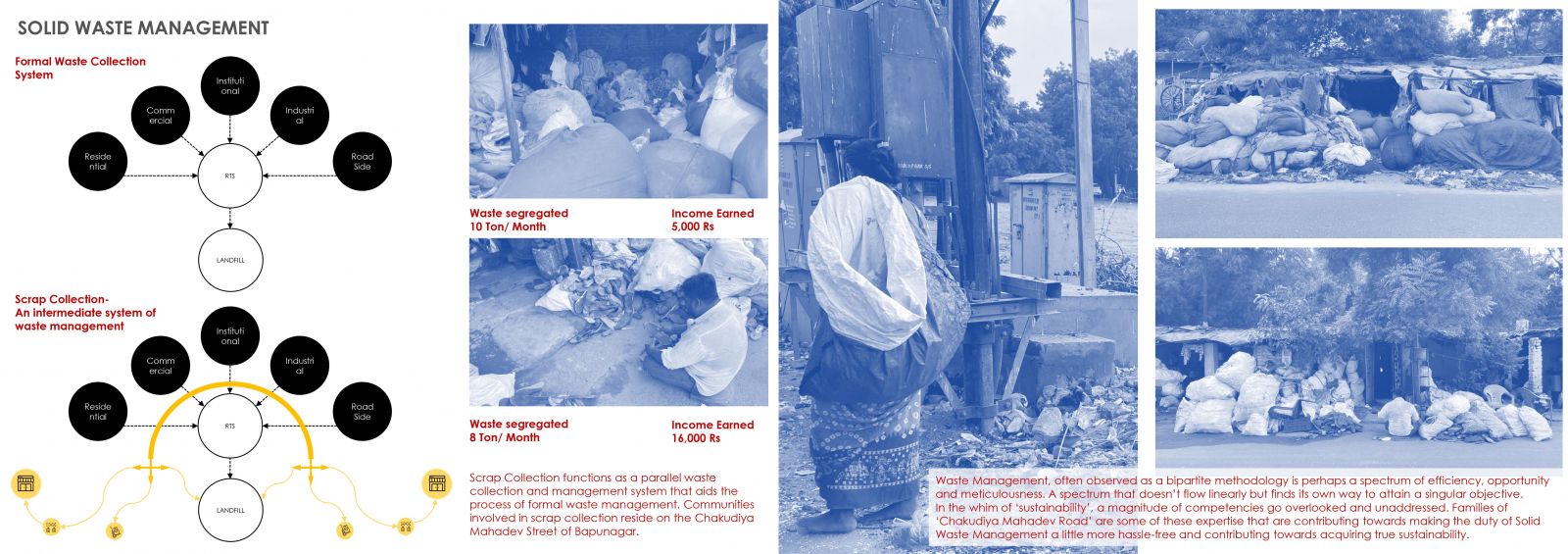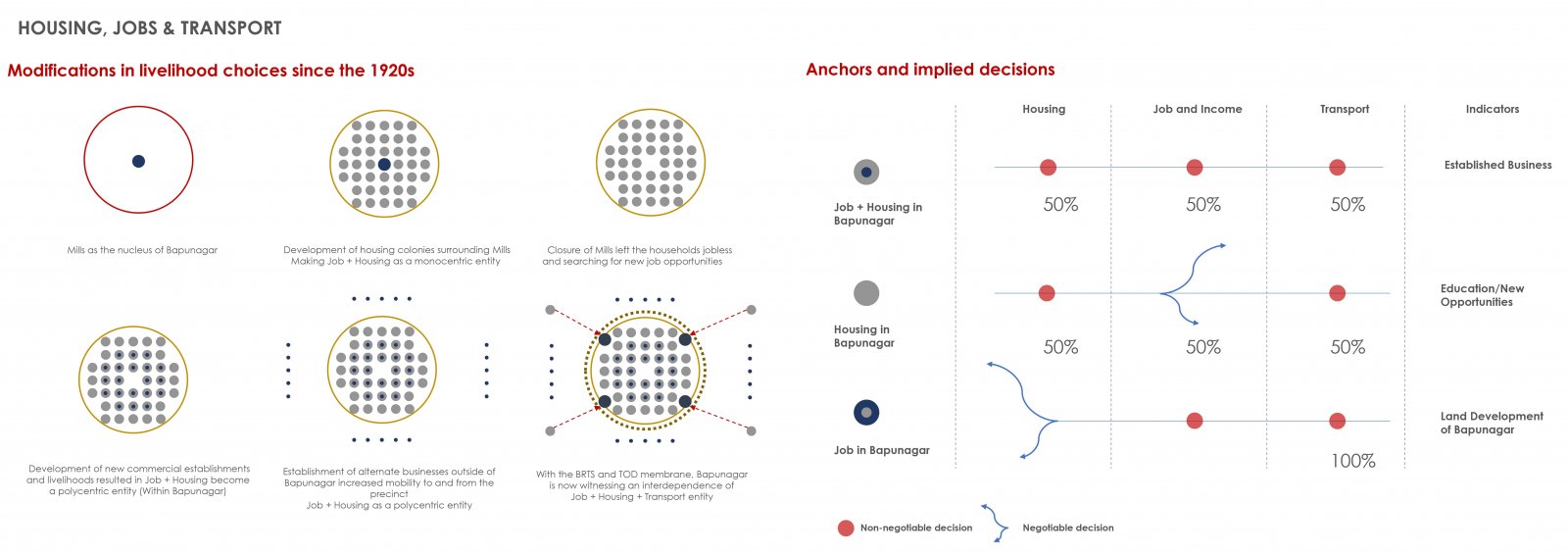- Student VANNE SHRUTI SUNIL VIDYA
- Code PUD22340
- Faculty Planning
- Tutor/s Rutul Joshi,Umesh Shurpali,Anil kumar Roy,Ravi Sannabhadti,Nitika Bhakuni,Narendra Mangwani,Arjun Joshi,Tarun Patel,Rushil Palavajjhala ,Giby Abraham
- TA Sreedevi Kurur,Priyanka Baghel,Chinmay Gheware,Richa Bihari,Ratik Verma,Kirti chandra Devaguptapu,Rohini Chatterjee,Annesha Dasgupta,Arkadipta Banerjee,Garima Munjal
Bapunagar is located along the eastern fringes of Ahmedabad and is known for its rich history of the textile industry. This portfolio presents the journey of Bapunagar which formerly functioned as an industrial neighborhood and now with changing policies is making its way toward a mixed-use version of itself.
Bapunagar emerged as a robust industrial neighborhood starting in the early 1920s following which, various cultural, social, and economic circumstances have provided Bapunagar with a distinct identity of its own. Today Bapunagar constitutes a maximum working-class population belonging to the Islamic ethnic group residing in row houses and semi-detached built typologies due to the development of mills and job opportunities available in Bapunagar. The built form of Bapunagar is planned and regulated in some parts, however, in some areas the settlements have grown organically demonstrating a unique relationship with the public streets. The commercial establishments along the main road and bazaars add a special character in establishing an engaging built-street interface. The physical form of Bapunagar is in the process of transformation, owing to the newly framed policies and changing by-laws. The opening of closed mill lands for development and the introduction of higher FSI across the BRTS network has impacted the development of Bapunagar significantly.
